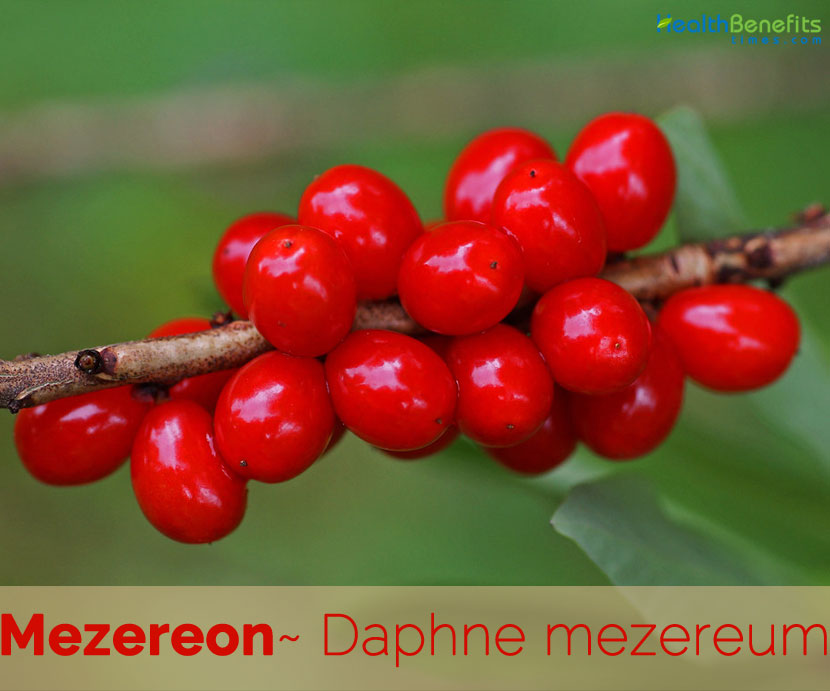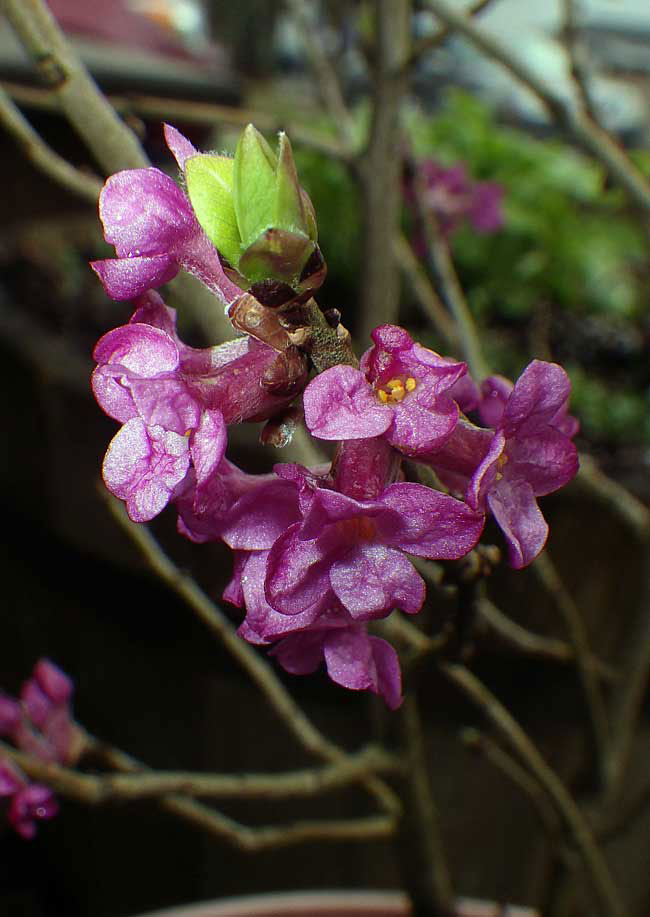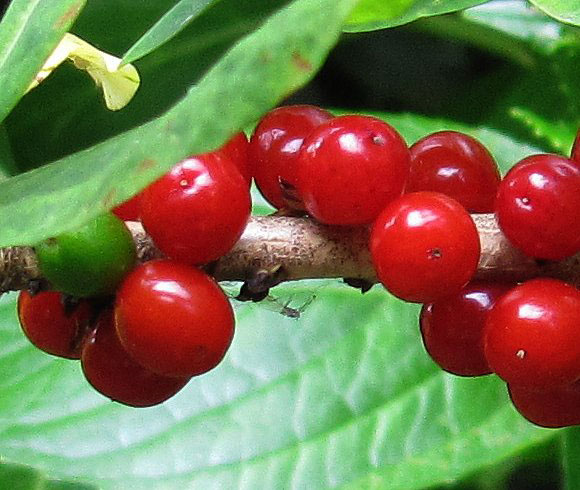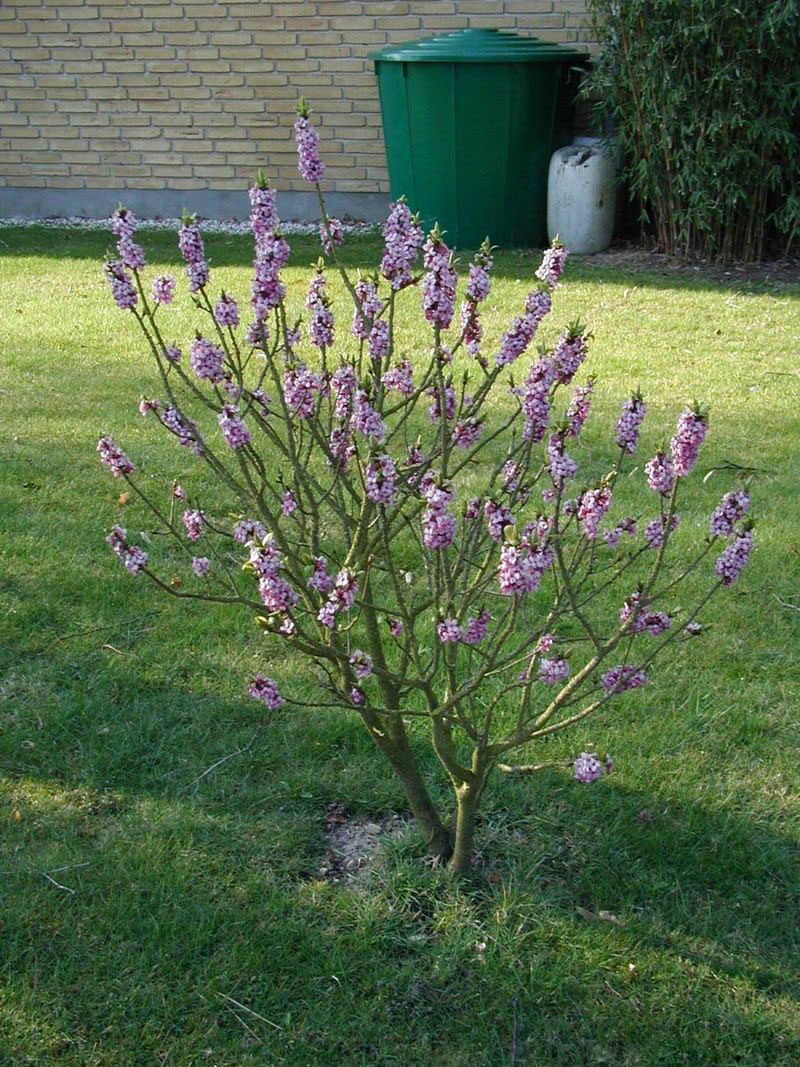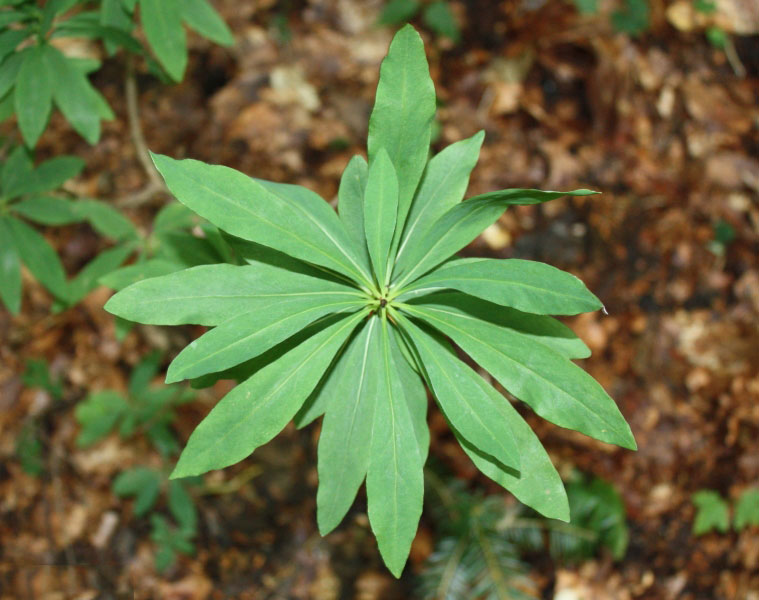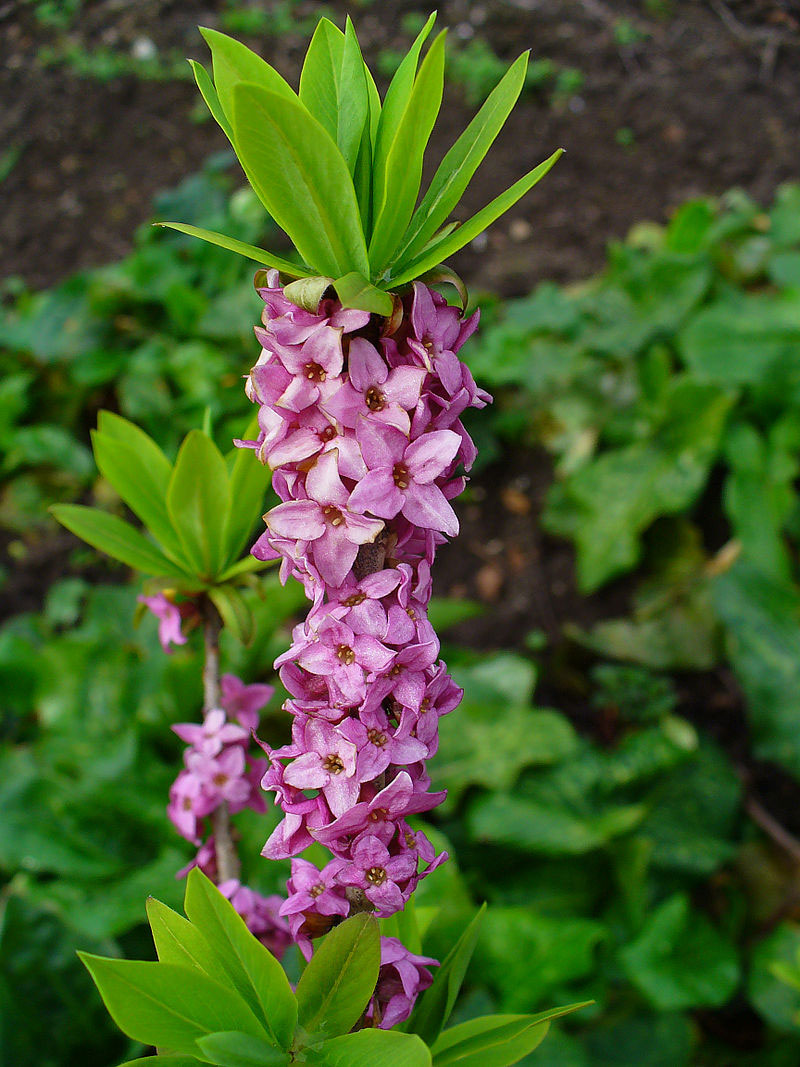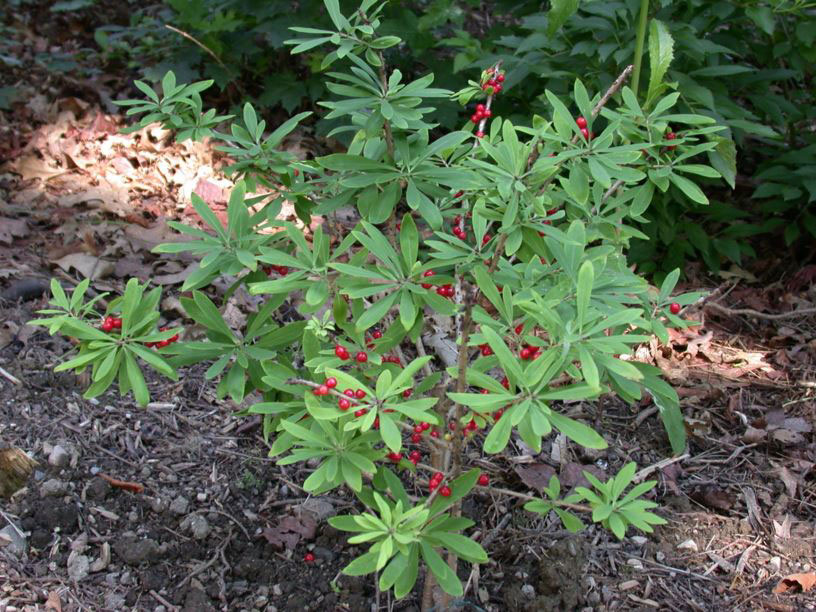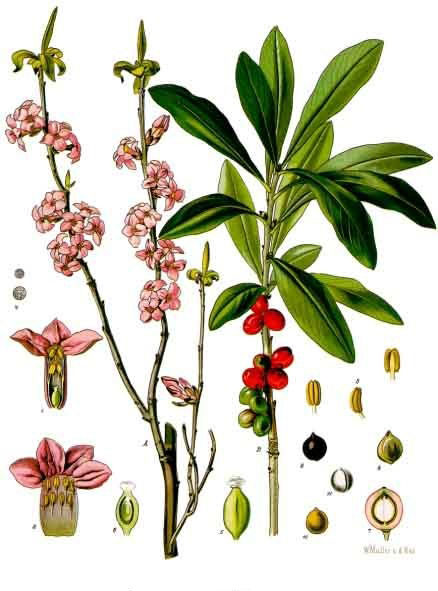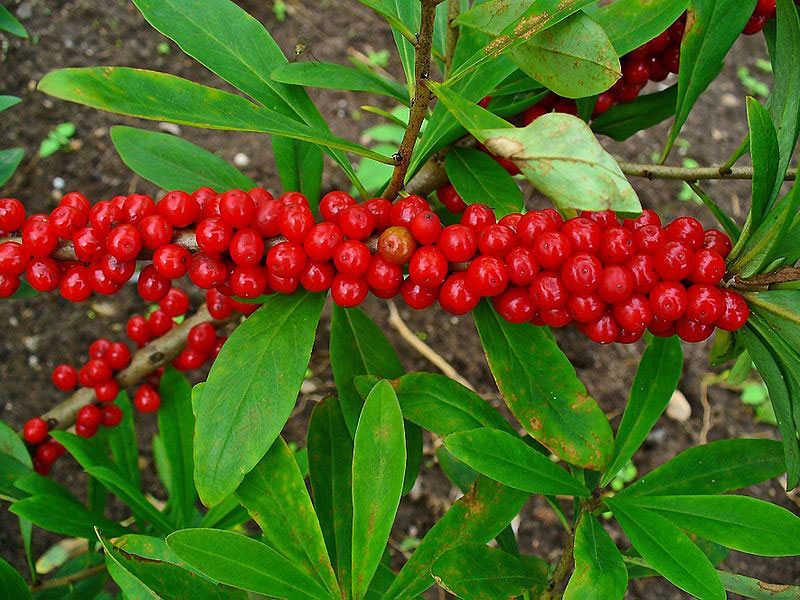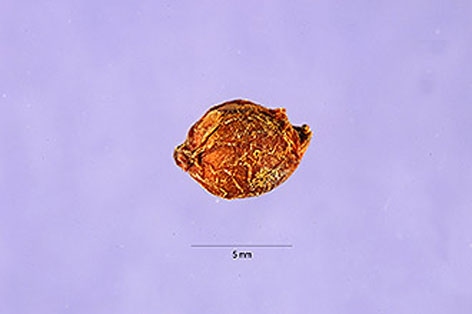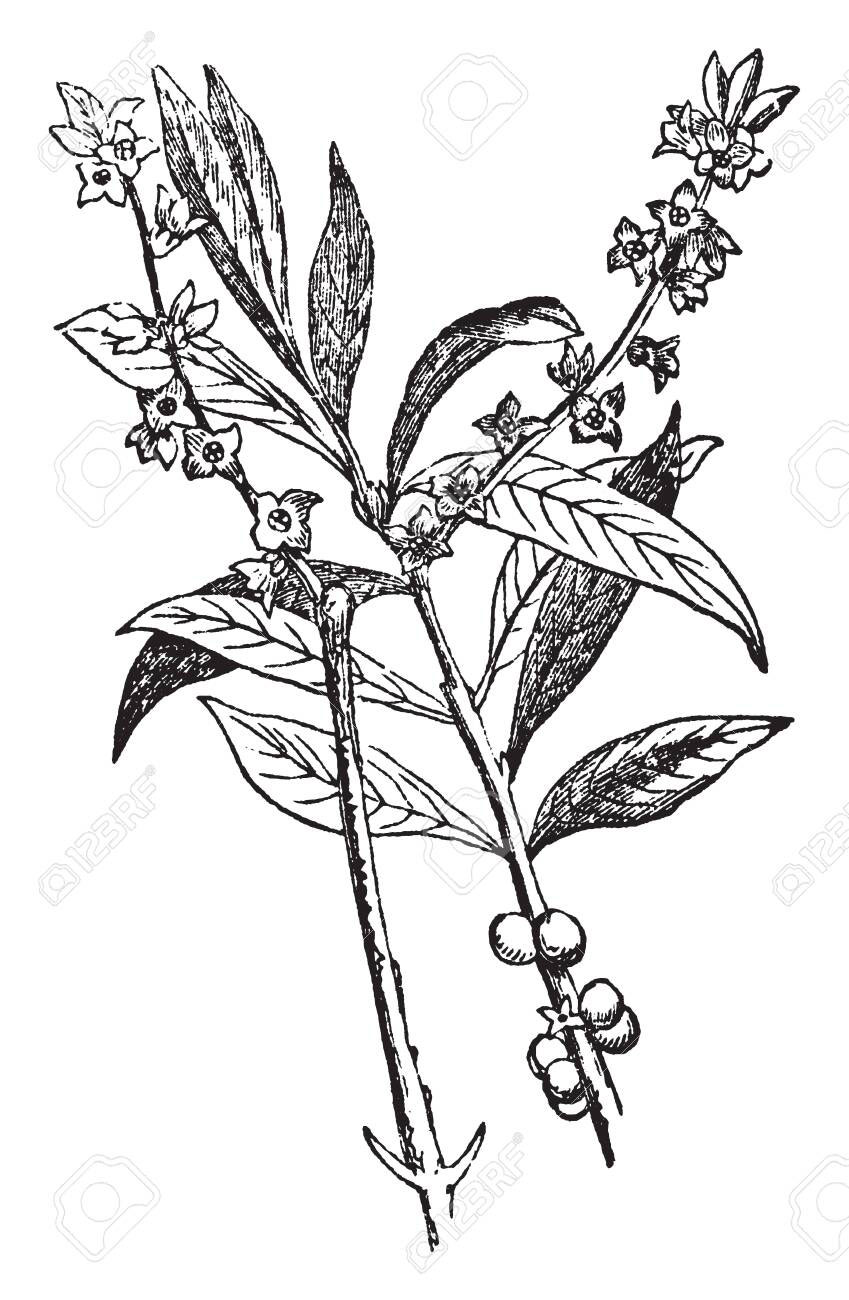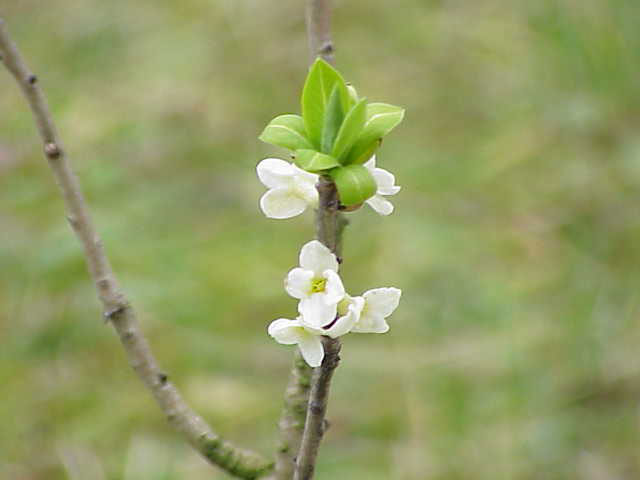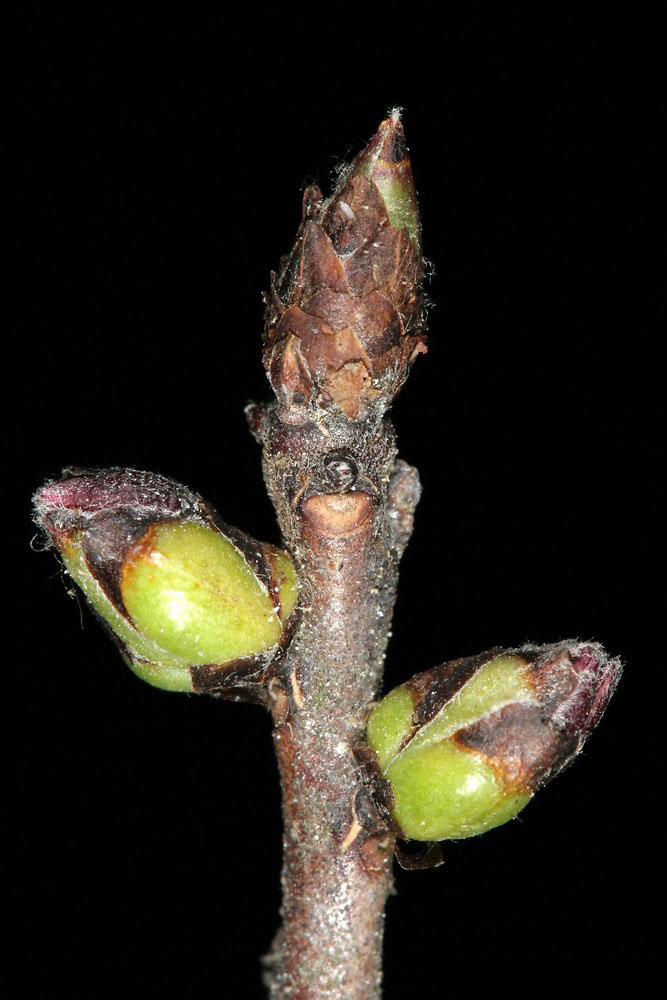Mezereon Facts
| Mezereon Quick Facts | |
|---|---|
| Name: | Mezereon |
| Scientific Name: | Daphne mezereum |
| Origin | Most of Europe and Western Asia, north to northern Scandinavia and Russia |
| Colors | Initially green turning to bright-red as they mature |
| Shapes | 1-seeded, fleshy, ovoid, bluntly-pointed drupe, about 7–12 mm diameter |
| Taste | Intensely burning and acrid, though sweetish at first |
| Health benefits | Beneficial for rheumatism, indolent ulcers, skin complaints and inflammations, venomous bites, neuralgia and toothache |
| Name | Mezereon |
|---|---|
| Scientific Name | Daphne mezereum |
| Native | Most of Europe and Western Asia, north to northern Scandinavia and Russia |
| Common Names | Dwarf laurel, February daphne, Flax olive, Mezereon, Paradise plant, Spurge daphne, Spurge laurel, Spurge olive, Tintorell, Daphne, Lady laurel, Dwarf Bay, garland flower, Spurge daphne |
| Name in Other Languages | Afrikaans: Mezereon Albanian: Mezereon, Jargavan mali, xerxele Amharic: Mēzēroni (ሜዜሮን) Arabic: Maziriun (مازريون) Armenian: Mezereon (մեզերեոն), gaylahat mahats’u (գայլահատ մահացու) Azerbaijani: Mezereon, Adi canavargiləsi Bashkir: Бүре еләге Basque: Ereinoztxo, ario, ereinozki, tartiku belarra Belarusian: Vaŭčajahada zvyčajnaja (Ваўчаягада звычайная) Bengali: Mezereon-məˈzi(ə)rēən Bulgarian: Mezereon-məˈzi(ə)rēən, byasno dŭrvo (бясно дърво), vŭlche liko (вълче лико), div lyulyak (див люляк) Burmese: Rar wate (ရာဝတီ) Catalan: Herba dels fics, Olivella, Olivereta, Tintorell Chinese: Méi sāi lǐ áng (梅塞里昂), Ou ya rui xiang (欧亚瑞香) Croatian: Mezereon, obični likovac Czech: Mezereon, lýkovec jedovatý Danish: Mezereon, Pebertræ, Peberbusk Dutch: Mezereon, Rood peperboompje, peperboompje English: Dwarf laurel, February daphne, Flax olive, Mezereon, Paradise plant, Spurge daphne, Spurge laurel, Spurge olive, Tintorell, Daphne, Lady laurel, Dwarf Bay Esperanto: Mezereo, mezereon Estonian: Mezereon, Harilik näsiniin Filipino: Mezereon Finnish: Mezereon, Lehtonäsiä, Näsiä, Lehtonäsiä French: Mezereon, Bois gentil, Bois joli, Daphnà bois-gentil, Daphnà joli-bois , Daphnà mÃzÃréon, Faux Garou, Lauréole femelle, Lauréole jolie, Daphné mézéréon, cancerille, daphné morillon, faux garou, garoutte, joli bois, lauréole femelle, lauréole gentile, merlion, morillon, mézéréon, Georgian: Mezeroni (მეზერონი) German: Mezereon, Echter seidelbast, Kellerbalz, Seidelbast, Gemeiner Seidelbast, Gewöhnlicher Seidelbast, Kellerhals, roter Seidelbast, Zilander Greek: Mezeron (μεζερον), lykonourá (λυκονουρά), matzéreon (ματζέρεον), chamoliá (χαμοληά) Gujarati: Mējhērōna (મેઝેરોન) Hausa: Mezereon Hebrew: מזרון Hindi: Mezereon-məˈzi(ə)rēən Hungarian: Mezereon, farkasboroszlán Icelandic: Mezereon Ido: Mezereono Indonesian: Mezereon Irish: Mezereon Italian: Mezereon, Erba cativa, Laureola femmina, Laureola gentile, Legno gentile , Mezereon, Camalea, Dafne mezereo, Pepe di Monte, fior di stecco, laureola femmina, mezzereo Japanese: Mezereon (メゼレオン), Seiyouonishibari (セイヨウオニシバリ) Javanese: Mezereon Kannada: Mejeriyan (ಮೆಜೆರಿಯನ್) Kazakh: Mezereon (мезереон) Korean: Meje lion (메제 리온) Kurdish: Mezereon Lao: Mezereon-məˈzi(ə)rēən Latin: Casiam Latvian: Mezereons, Parastā zalktene Lithuanian: Mezereonas, Paprastasis žalčialunkis Macedonian: Mezereon (мезереон) Malagasy: Mezereon Malay: Mezereon Malayalam: Mezereon-məˈzi(ə)rēən Maltese: Mezereon Marathi: Mējhērŏna (मेझेरॉन) Mongolian: Mezereon-məˈzi(ə)rēən Nepali: Mezereon-məˈzirēən Norwegian: Mezereon, Kiukstbakst, Kiusbas, Kiusbast, Kiusvedd, Tivedd, Tusvedd, Tysbast Occitan: Gaouét, garou, gaùec, jutelhs, samboè Oriya: ମେଜେରନ୍ Ossetic: Cæstursgænæn (Цæстурсгæнæн) Pashto: ميزيرون Persian: Mezereon, هفت برگ Picard: Jolibò Polish: Mezereon, Wawrzynek wilczełyko Portuguese: Mezereon Punjabi: Mezereon-məˈzirēən Romanian: Mezereon, liliac de pădure Russian: Mezereon-məˈzirēən, Volcheyagodnik obyknovennyy (Волчеягодник обыкновенный), Volcheyagodnik smertel’nyy (Волчеягодник смертельный), volchnik obyknovennyy (волчник обыкновенный), volch’i yagody (волчьи ягоды) Serbian: Mezereon (мезереон), ajdučka oputa (ајдучка опута) Sindhi: ميزئيرون Sinhala: Mezereon-məˈzi(ə)rēən Slovak: Lykovec jedovatý Slovenian: Mezereon, navadni volčin Spanish: Mezereon, Hoja de San Pedro, Lauréola hembra, Leño gentil, Matacabras, Matapollo, Mecereo, Mecéreo, Mecerón, Mezereo, Mezereón, Olivareta, Torvisco, leño gentil, loriguillo, mecereon, torvisco, Sudanese: Mezereon Swedish: Tibast, Lehtonäsiä, Vanlig tibast, källarhals Tajik: Mezereon-məˈzirēən Tamil: Mezereon-məˈzirēən Telugu: Mezereon-məˈzirēən Thai: Mezereon-məˈzirēən Turkish: Mezereon, Ghulupa, Mazaryon agh, Mezeryon, kirkat Ukrainian: Mezereon (мезереон), Vovchi yahody zvychayni (Вовчі ягоди звичайні) Upper Sorbian: Zažny łyknowc Urdu: میزیرون Uzbek: Mezereon Vepsian: Kägennin’ Vietnamese: Mezereon, Thụy hương Á-Âu Welsh: Mezereon, Bliwlys Zulu: Mezereon |
| Plant Growth Habit | Cool weather, shade-loving, woodland, deciduous shrub |
| Growing Climates | Rich forests, lush broadleaf woods, spruce-broadleaf swamps |
| Soil | Best grown in moist, rich, sandy-humusy, moderately alkaline, well-drained soils |
| Plant Size | 80 to 150 centimeters and 1 to 1.5 meters width |
| Root | Shallow roots |
| Bark | Light grey-brown with a strong smell when fresh, especially the inner-bark |
| Stem | Upright, brown in color, woody |
| Leaf | Alternate, lanceolate, entire, 3–8 cm long and 1–2 cm broad arranged spirally on the stems. They are dark green in color |
| Flowering season | February to March |
| Flower | Flowers have four petals and are light red or red-violet in color. They open out before the leaves spring out and a few can be seen to open in mild period in January. The flowers have a strong perfume. |
| Fruit Shape & Size | 1-seeded, fleshy, ovoid, bluntly-pointed drupe, about 7–12 mm diameter, appear close to the stem in July |
| Fruit Color | Initially green turning to bright-red as they mature |
| Propagation | By seed |
| Taste | Intensely burning and acrid, though sweetish at first |
| Plant Parts Used | Bark of root and stem, berries, roots |
| Season | June to August |
| Other Facts |
|
Genus name was originally used for laurel (Laurus nobilis) but later transferred to this genus. Originally, from the nymph of the same name from Greek mythology, but could come from an Indo-European word meaning odor. Specific epithet comes from the Persian word mazariyun (name given to a species of Daphne). The plant is noted for their poisonous berries and scented flowers. All parts of this plant are poisonous to humans if ingested, especially the fruits, sap and bark. Plant saps also typically cause skin irritations. Plant saps were once used in a rouge-like cosmetic until it was discovered that rosy cheeks resulting from application of sap to skin were indicators of blood vessel damage rather than the blush of good health. Fruits are attractive to birds with no resulting ill effects.
Plant Description
Mezereon is a cool weather, shade-loving, woodland, deciduous shrub that normally grows about 80 to 150 centimeters tall and 1 to 1.5 meters width. The plant is found growing in rich forests, lush broadleaf woods and spruce-broadleaf swamps. It is best grown in moist, rich, sandy-humus, moderately alkaline, well-drained soils. The plant has shallow roots. Stems are upright, brown in color and woody. Bark is light grey-brown with a strong smell when fresh, especially the inner-bark. The leaves appear at the ends of the branches after the flowers, and are alternate, lanceolate, entire, 3–8 cm long and 1–2 cm broad arranged spirally on the stems. They are dark green in color.
Flowers and Fruits
The flowers have four petals and are light red or red-violet in color. Flowers are produced in early spring on the bare stems before the leaves appear and a few can be seen to open in mild period in January. The flowers have a strong perfume. Flowering normally takes place from February to March. Fertile flowers are followed by 1-seeded, fleshy, ovoid, bluntly-pointed drupe, about 7–12 mm diameter; appear close to the stem in July. They are initially green turning to bright-red as they mature. It is very poisonous for humans, though fruit-eating birds like thrushes are immune and eat them, scattering the seeds in their droppings.
Traditional uses and benefits of Mezereon
- Mezereum has been used in the past for treating rheumatism and indolent ulcers, but because of its toxic nature it is no longer considered to be safe.
- The plant consists of numerous toxic compounds, including daphnetoxin and mezerein, and these are currently being investigated for their anti-leukemia effects.
- Bark is cathartic, diuretic, emetic, rubefacient, stimulant and vesicant.
- Root bark is the most active medically, but the stem bark is also used.
- It has been used in an ointment to induce discharge in indolent ulcers and also has a beneficial effect upon rheumatic joints.
- Fruits have occasionally been used as a purgative.
- Homeopathic remedy is made from the plant.
- It is used in the treatment of various skin complaints and inflammations.
- An ointment was previously used to induce discharge in indolent ulcers.
- Bark is used for snake and other venomous bites, and in Siberia, by veterinary surgeons, for horses’ hoofs.
- In Germany a tincture of the berries is used locally in neuralgia.
- Slices of the root may be chewed in toothache.
Precautions
- All parts of the plant are highly toxic.
- Skin contact with the sap can cause dermatitis in some people.
- Berries have proved fatal to children.
- It may cause diarrhea, vomiting and stomach ache.
- High doses can be poisonous.
- It should be used under medical supervision.
- Handling the fresh twigs can cause rashes and eczema in sensitive individuals.
- Ingestion of plant parts leads within a few hours to severe irritation and a burning sensation in the mouth, with swelling of the lips and face, increased salivation, hoarseness and difficulty in swallowing.
- These symptoms are soon followed by severe abdominal pain, headache, numbness, nausea and bloody diarrhea.
- Children (who may be poisoned by the attractive red fruits) often show additional narcotic symptoms with muscular twitching.
- Bark is not usually taken internally and even when used externally this should be done with extreme caution and not applied if the skin is broken.
References:
https://www.itis.gov/servlet/SingleRpt/SingleRpt?search_topic=TSN&search_value=27126#null
https://npgsweb.ars-grin.gov/gringlobal/taxon/taxonomydetail?id=13273
https://pfaf.org/user/Plant.aspx?LatinName=Daphne+mezereum
http://www.missouribotanicalgarden.org/PlantFinder/PlantFinderDetails.aspx?taxonid=287356
http://www.floracatalana.net/daphne-mezereum-l
https://www.botanical.com/botanical/mgmh/m/mezere34.html
https://plants.usda.gov/core/profile?symbol=DAME3
https://en.hortipedia.com/Daphne_mezereum
http://www.theplantlist.org/tpl1.1/record/kew-2757105
https://gd.eppo.int/taxon/DAPME
https://en.wikipedia.org/wiki/Daphne_mezereum


